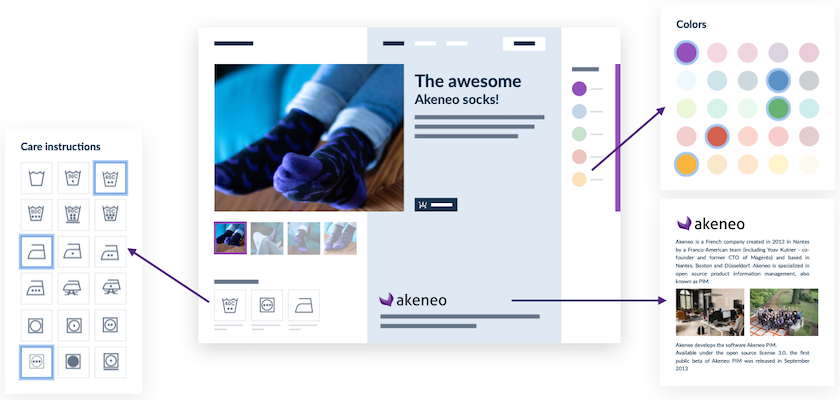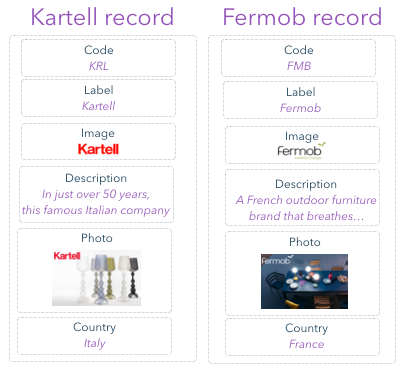Introduction to reference entities
In order to present you quickly the reference entities, let's take an example of a product page.

As you can see above are many types of product information visible on this page: text, images...
Some information are shared between different products (such as care instructions, or colors or even brands). This data can be complex to manage because it has its own attributes (e.g. a label, a logo, a description or photos).
Those information may have dedicated pages on one's e-commerce website (e.g. a webpage describing a brand) or their information may be used to enrich product pages (e.g. the logo of a brand).
A bit of vocabulary
What is a reference entity?
A reference entity allows you to create and enrich natively in the PIM those common information that are shared and related to products.
A reference entity has its own attributes, its own life cycle and can be linked to products or to another reference entity.
It allows enriching common data related to products with a rich content (text, images...), more complex than just a code and labels.
For example, you can create a reference entity to manage your brands, designers, manufacturers, product collections or ranges, artists, cities, countries, colors, sizes, materials, care instructions, technologies, ingredients...
Let's take an example with a reference entity called Brand and a list of brands (Kartell, Alessi, Fatboy, Fermob...).
A brand is described by the following information:
- a code
- a label
- an image
- a description
- a photo
- a country
What is a record?
For the Brand reference entity, a record contains all the information regarding a brand like Kartell or Fermob.

A record may be related to one or several products.
Let's create your first reference entity!
From a single place, in a dedicated Entities menu, you can create your first reference entity, define its records attributes, enrich its first records and link them to products. Let's go!
